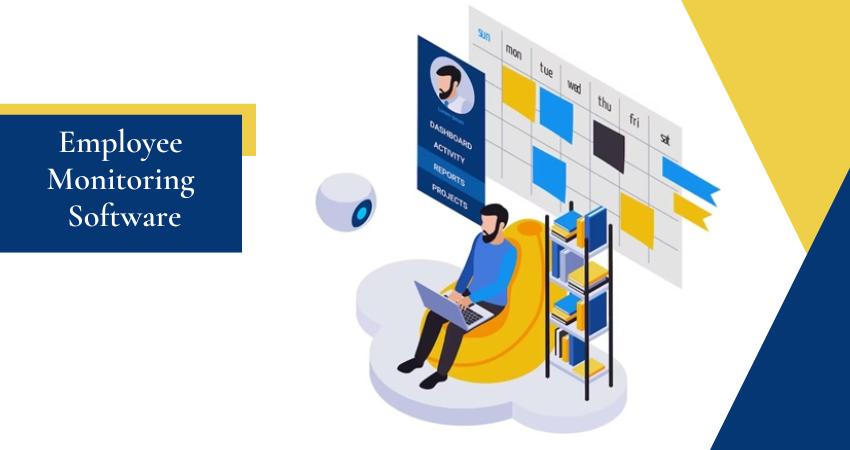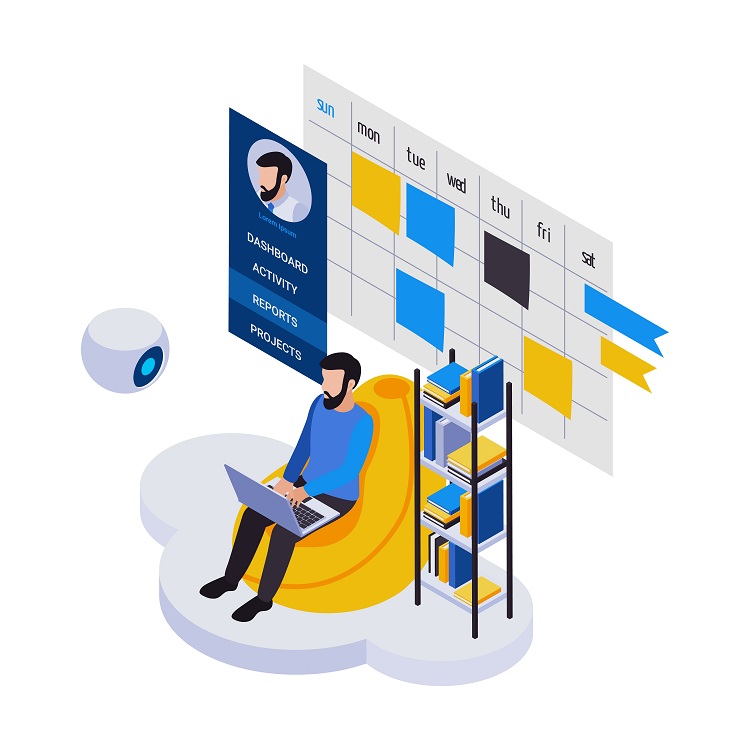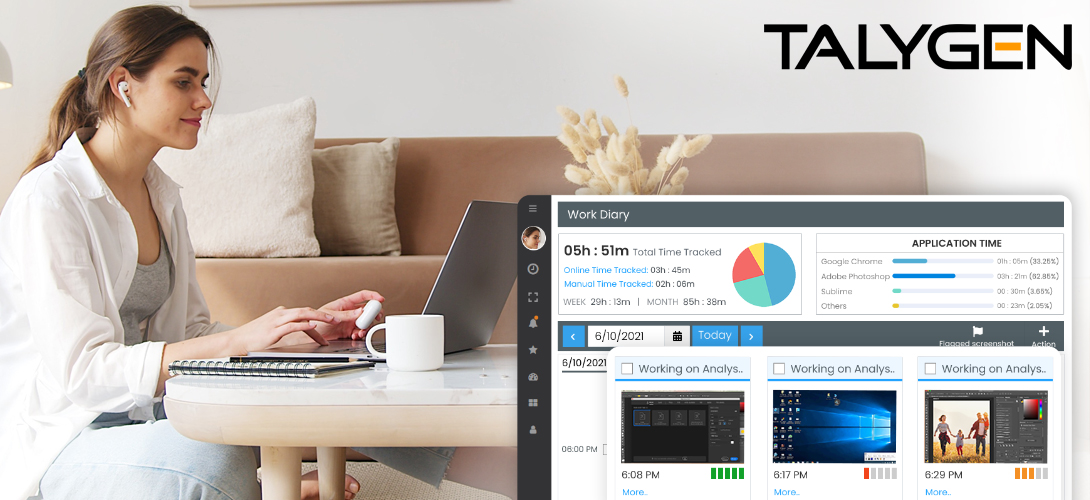Recommended Advice On Picking Employee Monitoring Services
What Is The Best Employee Monitoring Software? And What Do I Need To Know Prior To Deciding It?The software for monitoring employees is a type used by businesses to monitor and track employees’ activities. Employers can gather information on different aspects of employee behavior, such as internet usage applications, keystrokes, app usage, and even screen shots. The software for monitoring employees has a primary purpose to increase employee productivity, ensure that the company's policies are followed and protect confidential information and resolve any security concerns. There are many factors to think about when selecting an the best employee monitoring software. Be aware of these important points: Features- Determine which specific features you require in accordance with the needs of your business. Common features include monitoring activity, blocking websites keystroke logs, application usage tracking, email monitoring, and report generation. Prioritize features that align with your monitoring goals.
Privacy and Compliance- Make sure that the software follows the ethical and legal guidelines for the monitoring of employees. Know the relevant laws and regulations in your region. You should look for software that is flexible and transparent features to ensure the privacy rights of employees.
Be sure to consider the software's usability and accessibility. An intuitive interface for users and a simple set-up process can save you time and make the process easier to implement. Look for customizable dashboards and intuitive tools for reporting which allow you to quickly navigate and interpret the data you have collected.
Integration and Compatibility: Ensure the software's compatibility with your infrastructure. This includes operating systems, email software, project management platforms, as well as collaboration tools. It permits seamless monitoring of your systems without disrupting normal activities.
Data Security- Evaluate the security measures of the software to protect the data collected. Data encryption, storage within a safe setting access control, the compliance with security standards are all essential. Check that the software company is recognized for its data security track record and has strong security measures.
Scalability: Take into consideration how the software will scale to meet the requirements of your growing company. If you anticipate expanding your workforce or opening new locations, you should choose a software that is able to easily scale to meet the changing demands of your business.
Analytical Reporting: Check the software's reporting and analytics capabilities. Find features that provide complete information on the productivity of employees and their time allocation. Customized reports and analysis will aid you in making informed choices, and pinpoint areas of improvement.
Customer Support – Evaluate the quality and accessibility of customer service provided by software providers. You can assess their accessibility, responsiveness and technical assistance they offer. If problems arise, a excellent customer service guarantees that you receive quick assistance.
Cost- Examine the pricing structure for the program. Is it a single payment, a monthly subscription or based on usage? Be aware of the cost and whether there are extra charges for support, upgrades or other features. Budget your purchase in relation to the features and value provided.
Employee Communication and Transparency- Establish an open and transparent communications with employees about the introduction of software for monitoring. Transparently communicate the purpose and scope of work and expectations with respect to the monitoring. Explain to them how they will be protected and address their concerns.
If you consider these elements by weighing these factors, you can make a well-informed choice and choose an employee monitoring system that meets your organization's needs while respecting the privacy of employees and the law. See the recommended time tracking monitoring service company for blog examples.

What Features Are Included In Employee Monitoring Software And How Do They Differ?
Software for employee monitoring offers numerous options to track and analyze employee behaviour. Different software options may provide different features, but they are generally the most used. It gives a comprehensive overview of what employees do at work.
Keystroke Logging: Keystroke logs track every single keystroke performed by employees. It can be used to assist in finding productivity bottlenecks, deterring unauthorized activities and gathering evidence in the event of an investigation.
Screenshots or Screen Recording Some software captures regular screenshots from computer screens, while other software records their screens in real-time. This feature can be useful in monitoring employee productivity, verifying compliance or troubleshooting problems.
Internet Usage Tracking – This feature tracks employee's online activities such as websites visited and search queries, and downloaded files. It is able to monitor excessive internet browsing that's not connected to work, potential security threats, or policy violations.
Application Usage Tracking - This feature tracks the applications employed by employees during working hours. It allows you to see what applications are the most popular, and helps to identify inappropriate or illegal application usage.
Email Monitoring - This feature allows employers the ability to check employee email messages, including those messages received and sent, attachments and email content. It helps to ensure conformity with corporate policies, to prevent data leakage and to look into any suspicious activity.
Document and file tracking This feature monitors the changes in the form of transfers, modifications, and additions to files. It assists in protecting sensitive data as well as monitor document collaboration.
Remote Monitoring lets employers supervise employees working remotely or at different locations. Employers can track their activity and ensure the efficiency of employees regardless of where they are.
Productivity Analysis. Programs for monitoring employees often include productivity analysis features that provide insight into employees' working patterns and levels of productivity. These analyses help determine areas of improvement and help to optimize workflow.
Reporting and Analytics - Rich analytics and reporting tools produce elaborate reports that contain visualizations of data collected. These reports can give valuable insight on the performance of employees, their time allocation and resource management.
Compliance and Policy Management: Some software solutions include features that ensure conformity with the corporate regulations and industry standards. They allow employers to define and enforce policies related to acceptable use of computers as well as internet access and data security.
Alerts and notifications- Alerts or notifications notify employers or managers of specific activities or events. They can alert to excessive internet use and attempts to gain access to restricted websites, or suspicious behaviour.
It is important to be aware that different employee monitoring software can have a variety of functions and features. When choosing software, consider the features that align with your objectives for monitoring and conform with legal and ethical guidelines in your region. Follow the best employee monitoring company for blog advice.

How Can Employee Surveillance Software Conform To The Privacy And Compliance Laws? Privacy Law?
Monitoring software for employees must be in compliance with privacy and compliance laws. While the exact legal requirements can vary depending on the location, there are a few typical ways that software for monitoring employees adheres compliance and privacy law. Consent & Notice- While many jurisdictions require employees to provide informed consent as well as receiving prior notice of any surveillance activity. Monitoring software for employees has tools to assist employers in communicating the policies of their monitoring clearly to their employees. This may involve providing written notices, seeking consent via consent forms, or implementing an employee handbook that outlines the procedures for monitoring.
Transparent Monitoring Polices- Employee monitoring tools encourage transparency. They ensure that employees are aware of what kinds of information is being gathered and for what purpose, as well being aware of the extent of monitoring. A clear, complete policy will allow employees to better comprehend their rights as regards of privacy and the limits of monitoring.
Data minimization is often implemented by employee monitoring software to ensure compliance with privacy laws. The software gathers and stores only necessary information, while eliminating unnecessary or overly detailed information. By limiting data collection to what is necessary for monitoring This software decreases privacy risks and promotes compliance.
Anaonymization and Aggregation Some software for monitoring employees anonymizes data or aggregates it to safeguard privacy of employees. Anonymization eliminates personally identifiable data (PII) from collected data and makes it difficult to associate information with specific individuals. The data aggregated comprises multiple employees' data in order to get insights at a general level, without the need to identify particular individuals.
Secure Data Store and Encryption Software for monitoring employees puts the security collected data first. Data is secured by secure storage practices for data and encryption methods. Secure data is important when it is in transit and at rest.
Access Controls and Restricted Privileges to ensure compliance, employee monitoring software usually provides access control and privileges that are granular. This allows employers limit access to monitoring data only to those who require it for legitimate reasons, such as HR employees or administrators.
Rights of the Employee Rights Right to respect the rights of employees is crucial to complying with privacy and compliance laws. Software for employee monitoring often has features that let employees access their monitoring data, ask for corrections, and even file complaints. This allows employees to make use of their rights and to seek recourse in the event of privacy breaches.
Compliance with Data Protection Regulations - Employee monitoring software has been developed to comply with data protection regulations such as the General Data Protection Regulation in the European Union (GDPR) or the California Consumer Privacy Act in the United States (CCPA). Compliance requires implementing the necessary measures to safeguard data subjects' rights and ensure lawful processing.
Although employee monitoring software can aid in compliance efforts in certain instances, it's equally important that organizations engage with legal experts to keep up-to-date with the applicable laws and regulations within their jurisdiction. To adhere to the laws governing privacy and compliance it is essential to implement a comprehensive strategy essential that goes beyond the software. It includes specific policies and education for employees as well continuous monitoring of compliance. View the best employee monitoring company for more examples.
